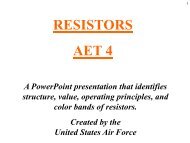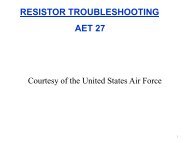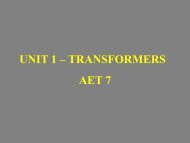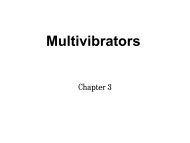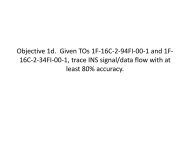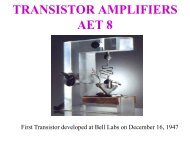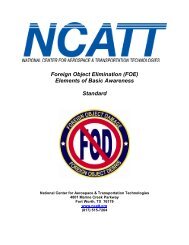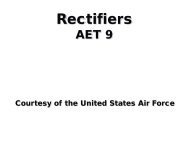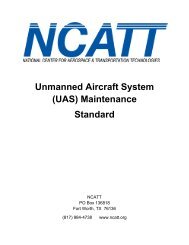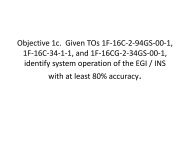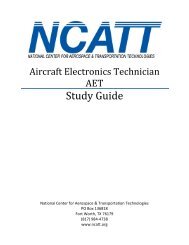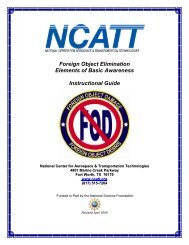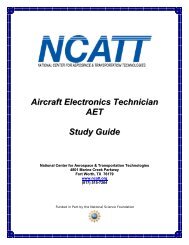(AET) Study Guide - NCATT
(AET) Study Guide - NCATT
(AET) Study Guide - NCATT
- No tags were found...
Create successful ePaper yourself
Turn your PDF publications into a flip-book with our unique Google optimized e-Paper software.
Page 27 of 5115. Hazards/Safety Practices <strong>NCATT</strong> Training Standard Level (A)(e) MicrowaveObjective:Identify basic facts and terms about hazards and safety practices concerning microwave energy.Content – Microwave Energy:Radio Frequency (RF) energy and microwave energy are forms of electromagnetic energy; theydiffer in frequency and wavelength. Explain the terms and safety programs with reference to thefollowing terms:• Microwave (MW) Energy—Microwave energy/radiation. Microwave energy is one formof electromagnetic energy that makes up the electromagnetic spectrum. Microwavefrequencies are normally used for satellite communication and radar. These frequenciesare also used for bonding composite sheets for the automotive and aerospace industries.• Microwave Protection Program—Includes training in normal operation of equipment,support such as periodic screening of employees and facilities, and appropriateemergency procedures.15. Hazards/Safety Practices <strong>NCATT</strong> Training Standard Level (A)(f) Hazardous LiquidsObjective:Identify basic facts and terms about hazards and safety practices concerning hazardous liquids.Content – Hazardous Liquids:Explain the importance of manufacturer’s warnings and recommendations for hazardous liquidsafety practices with reference to the following terms:• Hazardous Liquids—Includes corrosives, ignitables, and reactives, as well as chemicalsused as solvents, cleaners, caustic solutions, degreasers, strippers, adhesives, andcoatings.• Solvents—Substance that dissolves another substance or substances to form a solution.Solvents are usually, but not always liquid. Solvents can also be gases or solids. Twoextremely hazardous solvents used in the aircraft industry are the following:o Methyl Ethyl Ketone (MEK)—Solvent used in the surface coating industry and indewaxing of lubricating oils. Methyl Ethyl Ketone is commonly used with otherosolvents such as acetone, ethyl acetate, hexane, toluene, and alcohols.Acetone—Organic solvent of industrial and chemical significance. Acetone iscolorless, volatile, and extremely flammable.• Cleaners—Substances that may contain solvents, corrosives, or any number of chemicalsto clean an aircraft.• Caustic Solutions—Substances that can burn and destroy living tissues or soft metals.Caustic solutions are usually strong acids and/or bases.Copyright © 2008 by the National Center for Aircraft Technician Training. All rights reserved.Individuals may download, print, and make copies of this documentfor their own personal use. Commercial use prohibited.



